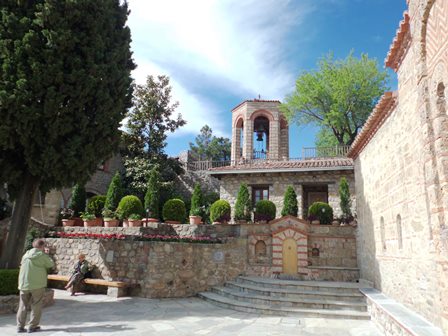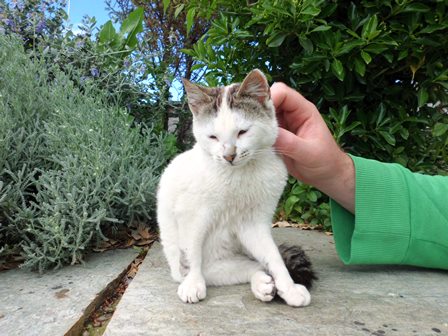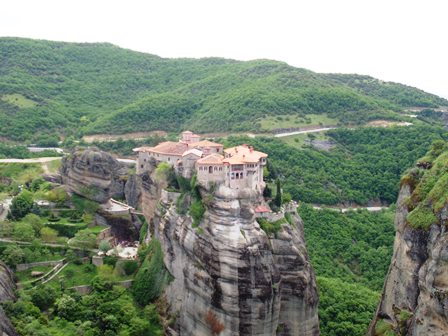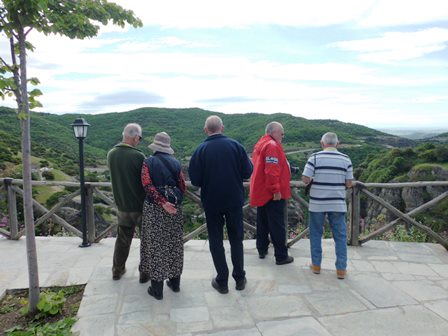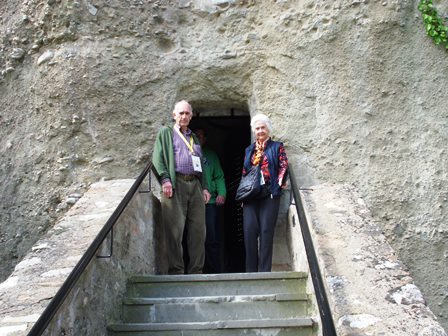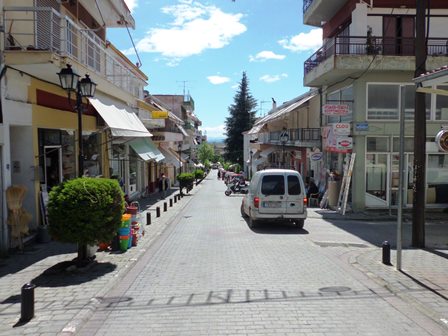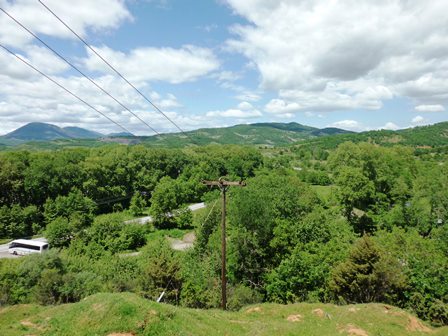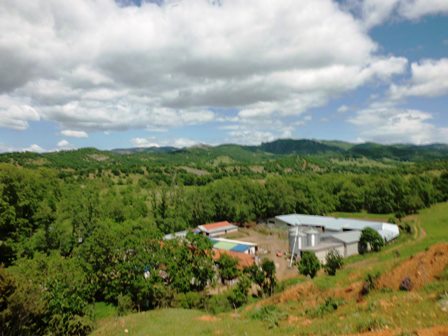Breakfast before our tour of the Monasteries on Meteora. These Monasteries were started in the 8th Century when Hermits came and lived in the caves of the rocks. They stayed in isolation eating the herbs and plants around the base of the rocks for sustenance. A couple of centuries later some Monks gathered together and started building the Monasteries. There were originally 25 in the 1500 century but now only 6, 4 for Monks and 2 Nunneries.
The Monks used to gain access by a basket being lowered and that was used to lift the Monks that was used to lift them and provisions into the Monastery prior to the current steps being built in the 1920's.
Our group was briefed by Ellena prior to us entering the church and it is a pity that I cannot show the beautiful paintings that cover the whole of the ceiling. The top of the wall and ceiling depicts the immortal heavenly aspect and the lower the life on earth aspect. All painted in the Byzantine period around the early
16th Century.
The outside aspect of the Monastery on the mountain is itself beautiful and there are well kept gardens and walkways.
Brig Savage was ordered to establish a blocking force at the Grevena Road junction. However, following a reconnaissance he decided that there was not an adequate position in that area as he had now a reduced force, losing the 2/6 and 2/7th Battalions to the force at Domokos but with still a large force itself enough to do the task at the right site.
He then blew the bridge at Grevena and a couple on the road to Kalabaka and 5 Km north of Kalabaka he selected his position, with the raging torrent of the main river covering his left flank, the swollen creek to his front and a major mountain protecting his right flank. With his 7 cruisers running a covering force action from Grevena to his position and with his 2/5 Bn, less a company, 2/11 Bn, troop Anti- Armour and MG support from the MG Bn in place on his selected position, it would have needed at least and attack by a Division to cause him problems.
There was not however any action here as he was able to move south prior to the Germans getting close to this position following the main force moving below Larissa that was or could have been a choke point..
On the hills surrounding the position there is a vast amount of the herb thyme growing and when walked on it the aroma filled the air. I wonder if the soldiers smelling the aroma knew what it was, maybe not as the cooking adventures provided by the influx of immigrants following the War was yet to be known,
Tomorrow we head further north to Florina and the location of the first action by the Australians in the War, Vevi. We will be meeting a ontingent of both local dignitaries, including the Bishop, the Mayor and the Head of the Regional Prefecture. Our team will conduct the Service at Xinon Nero, then visit the Bishop of Florina before being guests at the May celebrations in a nearby village. I am thinking that tomorrow could be an adventure.
We will report on those activities in tomorrow's posting.
These last shots show the area of the Savige Force blocking position 5 km north of Kalabaka.



